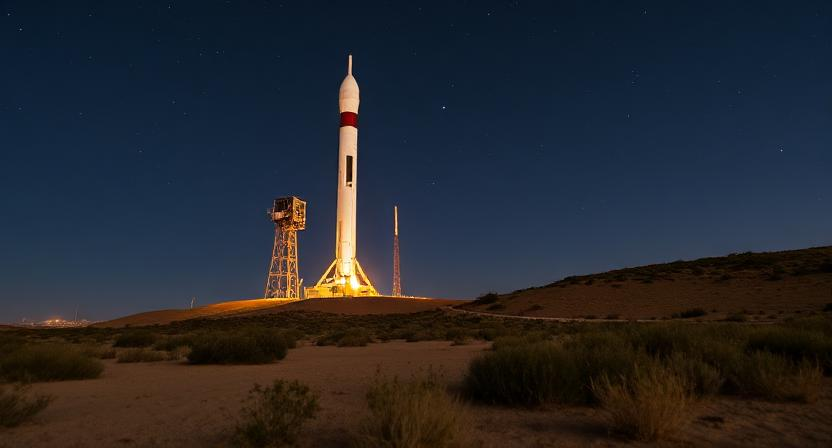Space exploration once belonged exclusively to governments. Nations spent billions on rockets and capsules. They pushed the boundaries of human achievement. Then, a new player emerged. This company revolutionized access to space. It transformed the industry forever. That company is Space Exploration Technologies Corp., universally known as SpaceX. Founded by visionary entrepreneur Elon Musk, SpaceX has charted an audacious course. Its mission goes far beyond merely launching satellites. It aims to make humanity a multi-planetary species. This ambitious goal drives every innovation, every rocket launch, and every setback.
The Genesis of a Giant: SpaceX’s Founding Principles
SpaceX was born from a profound frustration. Elon Musk sought to send a greenhouse to Mars. He discovered the exorbitant costs of traditional space travel. Existing rockets were expensive. They were also largely non-reusable. This inefficiency became his primary target.
Elon Musk’s Vision
In 2002, Elon Musk established SpaceX. His core philosophy centered on drastically reducing the cost of space transportation. He believed that cheaper access to space was vital. It was the only way to enable human colonization of other planets. He poured his personal wealth into the venture. This demonstrated his unwavering commitment. He aimed to make spaceflight sustainable and accessible.
The Reusability Revolution
At the heart of Musk’s strategy lay reusability. Historically, rockets were single-use vehicles. They burned up in the atmosphere after one launch. This was like throwing away an airplane after a single flight. SpaceX challenged this paradigm. They designed rockets to return to Earth. They planned for these rockets to be reflown. This approach promised to slash launch costs by orders of magnitude. It truly revolutionized the industry.
The Early Days: From Falcon 1 to Crucial NASA Contracts
SpaceX’s journey was far from smooth. It faced numerous challenges and near-failures. Persistence ultimately prevailed.
The Falcon 1
SpaceX’s first orbital rocket was the Falcon 1. It was named after the Millennium Falcon from Star Wars. This small-lift launch vehicle was developed internally. Its early attempts faced setbacks. The first three launches ended in failure. This depleted the company’s funds. Many doubted its future.
A Turning Point: Falcon 1’s Success
On September 28, 2008, the fourth Falcon 1 launch was successful. It reached Earth orbit. This made SpaceX the first private company to achieve such a feat with a liquid-fueled rocket. This success was a lifeline. It secured crucial investment and contracts. Elon Musk reportedly split his last $30 million between SpaceX and Tesla.
NASA’s Commercial Crew and Cargo Programs
NASA recognized SpaceX’s potential. In December 2008, SpaceX won a significant Commercial Resupply Services (CRS) contract from NASA. This contract was worth $1.6 billion. It involved ferrying cargo to the International Space Station (ISS). This partnership was transformative. It provided vital financial stability. It also validated SpaceX’s capabilities. Later, NASA also selected SpaceX for its Commercial Crew Program. This aimed to return human spaceflight capabilities to the U.S. soil.
The Workhorses: Falcon 9 and Falcon Heavy
With the Falcon 1’s success, SpaceX shifted its focus. They developed more powerful and versatile rockets.
Falcon 9: The Workhorse
The Falcon 9 debuted in June 2010. It was named for its nine Merlin engines. This two-stage rocket became the backbone of SpaceX’s operations. Its most innovative feature was its reusability. The first stage was designed to return to Earth. It could land vertically on land or on an autonomous drone ship at sea.
- First Vertical Landing: In December 2015, a Falcon 9 first stage successfully landed at Cape Canaveral. This was a historic moment. It proved the concept of orbital-class rocket reusability.
- Routine Landings: SpaceX rapidly perfected the landing technique. Falcon 9 first stages now routinely land after missions. This dramatically lowers launch costs. It allows for rapid reflight.
Falcon Heavy: The Powerhouse
The Falcon Heavy launched for the first time in February 2018. It is essentially three Falcon 9 first stages strapped together. It became the most powerful operational rocket at its debut. It can lift massive payloads into orbit. Its first test flight famously sent Elon Musk’s Tesla Roadster into space. Two of its three boosters successfully landed back on Earth.
Beyond Launch: Dragon, Starlink, and Starship
SpaceX’s ambitions extend far beyond just launching rockets. They are developing spacecraft and building global constellations.
Dragon Spacecraft: Cargo and Crew Transport
The Dragon capsule is SpaceX’s versatile spacecraft.
- Cargo Dragon: It first docked with the ISS in May 2012. This made SpaceX the first private company to resupply the orbiting laboratory. Cargo Dragons deliver supplies. They also return scientific experiments to Earth.
- Crew Dragon: This human-rated version launched its first crewed mission in May 2020. NASA astronauts Doug Hurley and Robert Behnken flew to the ISS. This restored America’s human spaceflight capability. Crew Dragon now routinely ferries astronauts to and from the ISS. It also conducts private space tourism missions.
Starlink: Global Internet from Space
Starlink is SpaceX’s satellite internet constellation. Its goal is to provide high-speed, low-latency broadband internet globally. It particularly targets remote and underserved areas. Thousands of small satellites operate in low Earth orbit.
- Mass Production and Deployment: SpaceX manufactures these satellites in-house. Falcon 9 rockets launch dozens of Starlink satellites at a time. This rapid deployment creates a vast network.
- Global Reach: Starlink services are expanding quickly. They are available in over 130 countries and territories. This connectivity is vital for remote communities. It also supports emergency services.
Starship: The Multi-Planetary Dream
Starship represents the culmination of SpaceX’s grand vision. It is a fully reusable, super heavy-lift launch system. It consists of the Starship spacecraft and the Super Heavy booster.
- Mars Colonization: Starship is designed for deep space missions. Its ultimate goal is to transport humans and cargo to the Moon and Mars. It aims to establish permanent bases.
- Earth-to-Earth Travel: Beyond space, Starship is envisioned for rapid point-to-point travel on Earth. It could transport passengers anywhere in the world within an hour.
- Testing and Development: Starship is currently undergoing extensive testing. It involves numerous prototypes and flight tests. Each test provides valuable data. It refines the design and operations.
Deep Factors Driving SpaceX’s Success
SpaceX’s rapid ascent is due to several interlocking factors. These differentiate it from traditional aerospace companies.
Vertical Integration
SpaceX designs and manufactures most of its components in-house. This includes engines, structures, and avionics. This vertical integration provides immense control. It fosters rapid iteration. It also significantly reduces costs.
Rapid Iteration and Risk Tolerance
SpaceX embraces a “fail fast, learn faster” philosophy. They conduct numerous tests. They are willing to accept failures as learning opportunities. This contrasts with the cautious, risk-averse approach of older aerospace companies. This agility accelerates development cycles.
Software-Driven Approach
SpaceX leverages software extensively. This applies to rocket design, mission control, and autonomous landing. Software updates continuously improve performance. They allow for complex maneuvers.
Cost Reduction Focus
Every aspect of SpaceX’s operations aims at cost reduction. Reusability is key. They also use commercial off-the-shelf components where possible. Their streamlined processes minimize overhead.
Visionary Leadership (Elon Musk)
Elon Musk’s relentless drive and audacious goals inspire the company. His hands-on technical involvement is significant. His clear, long-term vision motivates employees and investors alike. He consistently pushes the boundaries of what is considered possible.
Conclusion: Charting Humanity’s Future in Space
SpaceX is more than just a rocket company. It is a force of disruption. It challenges established norms. It pushes technological boundaries. From the first tentative launches of Falcon 1 to the ambitious Starship program, SpaceX has consistently redefined what private industry can achieve in space. Its commitment to reusability, vertical integration, and bold vision has not only driven down launch costs but also reignited humanity’s aspirations for interstellar travel. As it continues its relentless pursuit of making life multi-planetary, SpaceX stands as a testament to innovation, perseverance, and the boundless potential of human ingenuity.
Here are the top 10 frequently asked questions about SpaceX, covering key aspects of the company’s mission, technology, and impact:
FAQ
1. What is SpaceX’s primary mission or goal?
SpaceX’s overarching mission is to make humanity a multi-planetary species. This involves drastically reducing the cost of space travel and enabling the colonization of Mars. The company believes that expanding life beyond Earth is crucial for the long-term survival of humanity.
2. Who founded SpaceX and when?
Elon Musk founded Space Exploration Technologies Corp., or SpaceX, in 2002. He self-funded the company with a significant portion of the money he earned from the sale of PayPal.
3. How does SpaceX reduce the cost of space travel?
SpaceX primarily reduces costs through rocket reusability. Its Falcon 9 and Falcon Heavy rockets are designed to land their first stages back on Earth (or on drone ships) after launching payloads. This allows them to be refurbished and reflown multiple times, significantly cutting down on launch expenses compared to traditional expendable rockets. Additionally, vertical integration (manufacturing most components in-house) helps control costs.
4. What are the Falcon 9 and Falcon Heavy rockets?
- Falcon 9: This is SpaceX’s workhorse orbital-class rocket. It is a two-stage rocket known for its reusability, primarily used for launching satellites (including Starlink) and Dragon spacecraft.
- Falcon Heavy: This is currently the most powerful operational rocket in the world. It consists of three Falcon 9 first stages strapped together, designed to lift very heavy payloads into orbit or beyond.
5. What is the Dragon spacecraft used for?
The Dragon spacecraft is a versatile capsule developed by SpaceX. There are two main versions:
- Cargo Dragon: This version transports supplies and scientific experiments to and from the International Space Station (ISS) for NASA and other customers.
- Crew Dragon: This human-rated version ferries astronauts to and from the ISS. It also conducts private space tourism missions, marking a new era in commercial human spaceflight.
6. What is Starlink, and what is its purpose?
Starlink is SpaceX’s satellite internet constellation. It aims to provide high-speed, low-latency broadband internet access globally, especially to remote and underserved areas where traditional internet infrastructure is unreliable or non-existent. It uses thousands of small satellites operating in low Earth orbit.
7. What is Starship, and what are its goals?
Starship is SpaceX’s next-generation, fully reusable super heavy-lift launch system. It consists of the Starship spacecraft and the Super Heavy booster. Its ambitious goals include:
- Transporting humans and large amounts of cargo to the Moon and Mars to establish permanent bases.
- Enabling rapid point-to-point travel on Earth, potentially allowing global travel within an hour.
8. Has SpaceX faced failures or challenges?
Yes, SpaceX has faced numerous failures and challenges throughout its history. Its first three Falcon 1 rocket launches failed, pushing the company to the brink of bankruptcy in 2008. The development of Starship has also involved multiple test failures and explosions. However, SpaceX operates on a philosophy of “rapid iteration” and learning from failures to improve quickly.
9. What is SpaceX’s relationship with NASA?
SpaceX has a strong partnership with NASA. It holds significant Commercial Resupply Services (CRS) contracts to deliver cargo to the ISS. Additionally, under NASA’s Commercial Crew Program, SpaceX’s Crew Dragon spacecraft is certified to transport NASA astronauts to and from the ISS, restoring America’s human spaceflight capability from U.S. soil.
10. Is SpaceX a public company? Can I invest in it?
No, SpaceX is a private company. It is not publicly traded on any stock exchange, meaning individual investors cannot directly buy its shares. Its ownership primarily lies with Elon Musk and private investors who have participated in its funding rounds.



